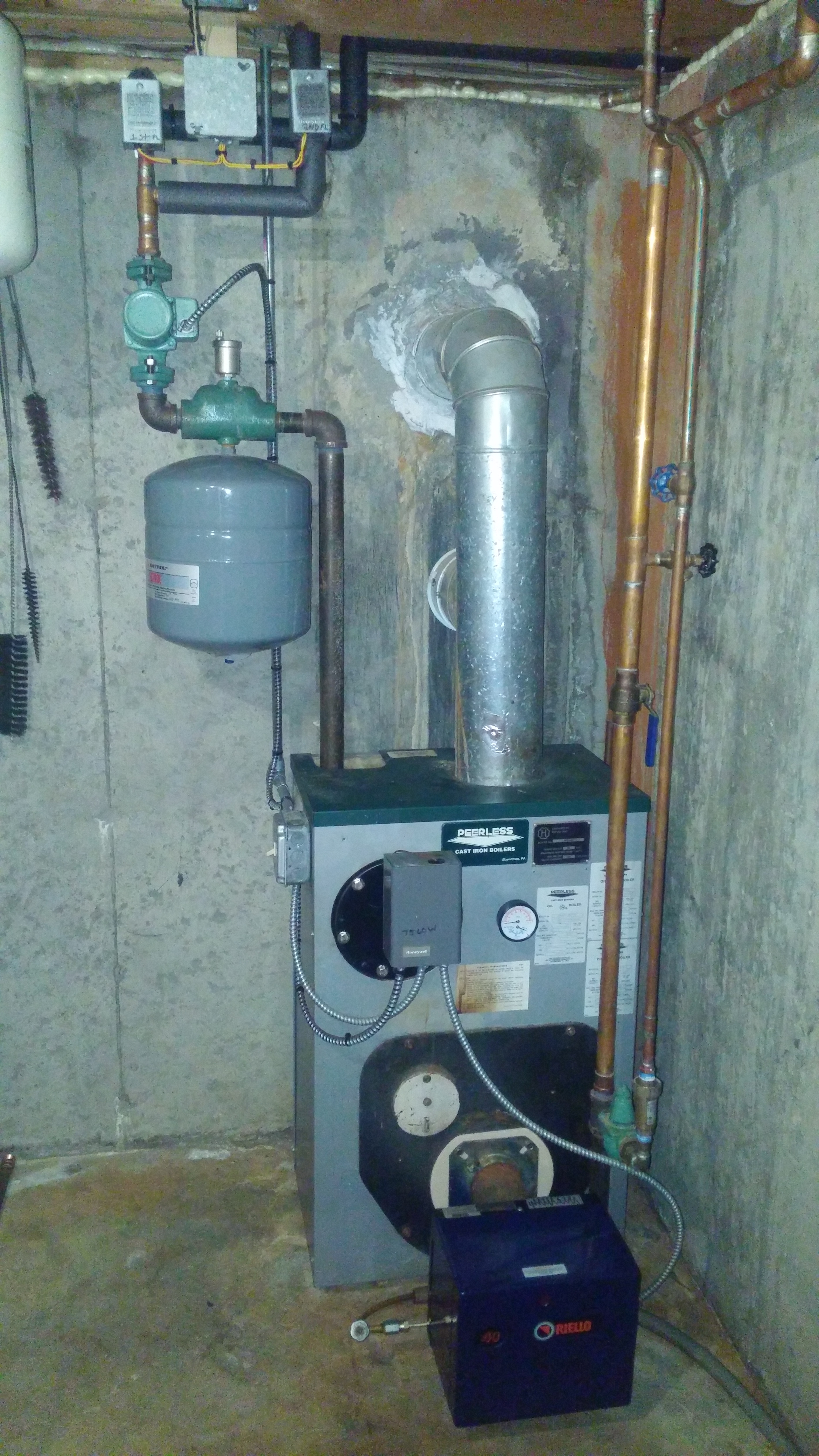Welcome! Here are the website rules, as well as some tips for using this forum.
Need to contact us? Visit https://heatinghelp.com/contact-us/.
Click here to Find a Contractor in your area.
If our community has helped you, please consider making a contribution to support this website. Thanks!
boiler protection piping help
Options
cableman
Member Posts: 69
Its come to my attention that i may need a boiler protection thermostatic valve like the caleffi model.
I burn alot wood for heating and my dhw is an 80gal geospring hphw, this tends to keep my boiler off for quite some time maybe kicking on once over night.
Where would you install this valve on my setup? Should it be down low or up high on my return? Does it go before or after the circulator on the feed side?
Im new to this boiler thing but have no problem repairing or piping stuff in.
Thanks for any help!


I burn alot wood for heating and my dhw is an 80gal geospring hphw, this tends to keep my boiler off for quite some time maybe kicking on once over night.
Where would you install this valve on my setup? Should it be down low or up high on my return? Does it go before or after the circulator on the feed side?
Im new to this boiler thing but have no problem repairing or piping stuff in.
Thanks for any help!


0
Comments
-
The reason for a thermostatic valve is to protect the boiler from running with low return water temps for an extended period of time. This will case condensate to build up in the boiler and flue causing corrosion.
Sitting idle is not a problem nor is running one reasonably long cycle per day. As long as the boiler can come up to temp and stay there for a bit, you should not have a problem."If you can't explain it simply, you don't understand it well enough"
Albert Einstein0 -
As long as the boiler gets up to an operating condition with 130F return back, you will be fine. Some suggest within 5-10 minutes of operation.
If the boiler was connected to a high mass load like a large buffer, for example, that could keep the boiler in a cold running mode for extended periods, then a return mix valve would be a good addition.
Is this a fin tube baseboard system?
Ideally that air scoop should have 18" of straight piping, but if you are running air free, all is well.
What type of flue is on the other side of the concrete wall?Bob "hot rod" Rohr
trainer for Caleffi NA
Living the hydronic dream0 -
Ok this sounds better, i didnt really wanna change much right now but will if it comes time to replace boiler.
Yes its a fin tube system, house is 2000sq', 2 zone. I completed attic and cantilever air sealing/insulating. Ill be addressing the 2nd floor zone where the feed and return hide in the 1st floors exterior wall. All basement pipes are insulated. System seemed to run air free since i moved in a year ago
Here is a pick of the chimney connector, it does have a ss liner. A 2' galvanized pipe came out of this and all pipe slid over each other, isnt this wrong? From chimney working down, pipe should slide into each piece so moisture and soot dont come out the seams correct? Problem is the connector in chimney is flanged and boiler adaptor is crimped.
Thanks again for the help.0 -
Fixed chimney connection and flue pipe out of boiler, made each connection go into the next from chimney to boiler. No more ugly stains!
Was checking out my neighbors wbv3 install, his boiler vent is coming directly out of boiler, theres a spot which is plugged on mine just next to the feed output. Is this a better way to vent then my current setup?0 -
you should go from Boiler to chimney..0
-
Really? I read something about taping seams is the wrong thing to do.
I know on my wood stove it has to be done this way due to creosote drip. Better off having condensate drip back into boiler being burned off then coming out seam and dripping outside of pipe no?0
Categories
- All Categories
- 87.4K THE MAIN WALL
- 3.2K A-C, Heat Pumps & Refrigeration
- 61 Biomass
- 429 Carbon Monoxide Awareness
- 120 Chimneys & Flues
- 2.1K Domestic Hot Water
- 5.8K Gas Heating
- 115 Geothermal
- 168 Indoor-Air Quality
- 3.7K Oil Heating
- 77 Pipe Deterioration
- 1K Plumbing
- 6.5K Radiant Heating
- 395 Solar
- 15.7K Strictly Steam
- 3.4K Thermostats and Controls
- 56 Water Quality
- 51 Industry Classes
- 50 Job Opportunities
- 18 Recall Announcements

